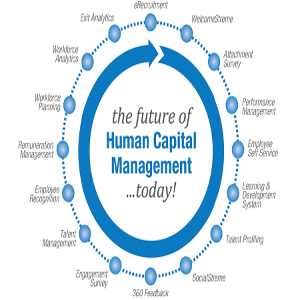THANK YOU FOR SUBSCRIBING

Yvonne Wassenaar, CIO, New Relic, Inc
You don’t really need a CIO in a “cloud-first company.” Or do you? A few years ago at my previous company, I was sitting in a conference room with several executives, debating the “death of the CIO” and the need to pivot our sales team from targeting CIOs to targeting business leaders. More and more spend was happening outside of the CIO organization, particularly by Chief Marketing Officers (CMOs) and Chief Revenue Officers (CROs). A new way of buying technology services, the “credit card swipe,” was becoming the norm.
Today, it’s given that cloud is enabling an unprecedented wave of technology advancement. Regardless of size or industry, the leaders of tomorrow are now working to transform their companies into software companies. To remain relevant in the marketplace, companies must embrace cloud and the digitization opportunities it enables, or risk extinction.
The Need for Night Vision
Shadow IT (i.e., IT solutions implemented without explicit IT approvals) has many appealing benefits such as functional empowerment, innovation and agility. Unfortunately, the downside can be a massive proliferation of solutions that over time start to conflict, duplicate, or fail to scale. How do you leverage knowledge for “night vision” to see into those shadows without driving a huge bureaucratic process? A smart way to address this is creating holistic financial dashboards of internal and external technology spends, showing all data, regardless of who placed the order. Collectively, this can empower people like the CMO to make the right decisions for his/ her function without micromanaging their team’s use of technology.
“To remain relevant in the marketplace, companies must embrace cloud and the digitization opportunities it enables, or risk extinction”
Research shows that we are not alone in our need for night vision. One research conducted by Netskope found that IT experts misjudged cloud application usage within their companies by as much as 90 percent. As a CIO, investing in night vision can provide your team and leaders critical insight into what is really going on in the business to help ensure they’re able make the most informed, useful go-forward decisions.
Don’t Drown
When you’re managing many SaaS applications, how do you keep your head above water? You focus. The priority should be the applications that clearly support key cross-company processes where there is a need to integrate information and action across functional groups. A good example of this is the “trial to order” process–i.e., your product team knows when a potential customer trials an offering; marketing nurtures this action as a lead, sales works to convert leads into orders, and finance turns orders into invoices and bookable revenue.
What I have found is that for the apps that matter the most, success lies in breaking away from the classical decentralized ownership approach where the “predominate user” engages with the vendor, pays the bills, and calls all the shots. But why would anyone want to give up his/her agility and control and let the CIO organization in? Because ultimately, organizations need to achieve cross-company process agility, and that cannot happen unless you engage someone with an overarching view to optimize at that level.
Bringing this to reality can be challenging for an organization. Developing strong partnerships with functions in cross-company areas is where the CIO of an organization can make the biggest and most welcome difference. I’ve seen this play out countless times across my career.
Double Down on Data
Simplifying and streamlining the business applications environment frees up capacity to innovate in areas that are more meaningful and impactful, such as data and BI. Once you do this, it is possible to address the common, but highly difficult, challenge of data held hostage in siloed SaaS applications. By enabling cross-application data accessibility, it is possible to do more holistic customer analysis, machine learning and predictive/prescriptive analytics. If someone calls tech support, no time is wasted asking about the operating system they use or the last time they had the error, and we already know what type of customer they are relative to our broader customer base. We know this and more because now information is integrated across our support, sales, product, and marketing applications, giving our tech support team a complete view of the customer’s engagement with us. With this information we are able to more effectively service their needs.
Framed with security and permissions rules, an integrated data/BI backbone allows users to access, analyze, and act on the key historical and real-time data from across the agreed-upon core SaaS applications. A huge benefit of this work is the “exit from Excel,” which plagues organizations large and small. Now there is a single source of truth and all team functions can focus on making the right business decisions versus debating whose data is accurate. Building out this internal BI-as-a-Service capability helps eliminate the need for the various data marts and data warehouses that inevitably spring up around the company. For a cloud-first CIO, the ultimate differentiator is not the process components residing in SaaS applications. Instead, it is the aligned business insight and how this is used to power these apps.
Seeing the Answer in the Clouds
Every business is becoming a software business and the cloud is a key part of enabling that transformation. To be successful, however, requires more than a changing business model or approach to engagement. Success requires that people also rethink what it means to be a CIO in a cloud-first world.
Based in San Francisco, California, New Relic, Inc. (NYSE:NEWR) is an enterprise software solution provider with cloud-based platform, and range of products that enable organizations to collect, store, and analyze software data in real time.
Weekly Brief
I agree We use cookies on this website to enhance your user experience. By clicking any link on this page you are giving your consent for us to set cookies. More info
Read Also
Artificial Intelligence - Myths And Truths
Sustainable Future through Innovative Technology Solutions
The Future Relies on Augmented AI
Digitalization with the use of digital technologies/Improving business through digital technologies
How Marco's Pizza Leaned On Technology To Succeed Amid The Pandemic By Quickly Pivoting To Contact-Free Delivery And Curbside Carryout
Bunnings Diy Digital Transformation
For a Smarter City: Trust the Data, Ignore the Hype
Smart Community Innovation for the Post Pandemic





















